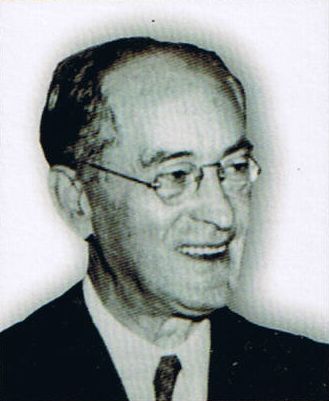My friends, the late journalist Steve Brennan and his wife Bernadette O'Neill put together a very good book, Emeralds in Tinseltown: The Irish in Hollywood, that begins its story in the earliest days of the film business. Hubert Brenon from Dublin, virtually forgotten today, was directing Mary Pickford films for Carl Laemmle before Hollywood even existed: it's been claimed he directed more than 300, most of them lost. He gave early leading roles to Theda Bara, Pola Negri, Ronal Colman, Clara Bow and Lon Chaney. According to Emeralds in Tinseltown, but not the DIB, Brenon sued the mogul William Fox when his directing credit was removed from the over-budget (but smash hit) Daughter of the Gods (1916): he was unsuccessful but the lawsuit emboldened directors to insist on credit in their studio contracts. Like so many, including his great countryman the director Rex Ingram, Brenon's career did not survive the transition to sound, although he made a steady stream of films in England until 1940. He died in Hollywood in 1958.
More Hollywood: the DIB's a little hard on George Brent (pictured here with his second wife Ann Sheridan). Born George Nolan in Co. Galway, he played at the Abbey Theatre but skipped out to Canada when suspected of IRA activity (you never know how true these stories - he appears to be the source for this one). While he was never a screen legend like Clark Gable, he was leading man to a host of the best Hollywood actresses including Greta Garbo, Merle Oberon, Olivia de Havilland, Barbara Stanwyck and, above all, Bette Davis, with whom he appeared 11 times, including in the sublime Jezebel and Dark Victory. The DIB is a little quick to push him off his pinnacle: even though he obtained fewer leading roles as he grew older, he still had large parts in major studio pictures until the late 1940s, and some the work of his "severe decline" is nonetheless interesting, including The Last Page, Terence Fisher's first film for Hammer Pictures, with a script by Frederick Knott (Dial M For Murder, Wait Until Dark) based on a play by James Hadley Chase (No Orchids for Miss Blandish). His post-movies television career was distinguished enough to earn him a second star on the Hollywood Walk of Fame. Still, as it must to all actors, obscurity finally descended on George Brent: after a spell of horse breeding, he died of emphysema in 1979.
Remember what I said about pictures? I don't claim that this is actually a picture taken from life of the High King Brian Boru, or Brian Bórama, as he's more accurately known (it means Brian from Bórama, a place near Killaloe in Co. Clare). He died in 1014 at the Battle of Clontarf at which the Irish defeated the Vikings outside Dublin. I still have my history textbook from national school 45 years ago, by "D. Casserley, M.A.", an interesting woman I would have like to have seen in the DIB. She tells the story all Irish children learned, and maybe still learn: how Boru united the Irish under a single High King and then broke the political power of the Viking invaders, dying at the moment of his triumph. It's quite a nuanced account for a book aimed at elementary schoolchildren (for instance, wondering if Boru felt any pangs of conscience about overthrowing his nearest rival - "we can only hope he did"). The DIB gives him his due - "an outstanding success" and "the most powerful of rules in his day" - while noting shrewdly that the image that grew after his death was one he himself had begun to cultivate beforehand.
Another legendary Irish figure: St. Brigit. This is what D. Casserley, M.A. had to say about her:
Bridgid, who was the daughter of a nobleman, was born at Faughart, near Dundalk, a few years before St. Patrick's death. When she grew up, she determined to devote her life to God's service, so she became a nun, and did splendid work among the poor, as well as converting many of the pagan Irish, of whom there were still a great number. The monastery which she founded was called Cill Dara (the Church of the Oak Tree), and it is from it that Kildare gets its name. Many stories are told of St. Brigid's goodness to the poor, and her love of children and animals. Under her wise and gentle rule the monastery and convent of Kildare were renowned throughout Ireland.The DIB harshes this buzz. Here is how its entry begins: "BRIGIT (Brighid, Brid, Bride, Bridget) (possibly c.450-524), reputed foundress and first abbess of Cell Dara (Kildare), is the female patron saint of Ireland, but it is uncertain whether she existed as a person." Oh well. She is posited as more likely a "ghost personality", founded a pagan goddess, also Brigit, who was used as an exemplar in the transition to Christianity. This did not prevent - or perhaps is the reason for - her cult becoming widespread and her name being given to a large number of places, churches, wells and the like in Ireland and in places where the Irish went. I always liked her feast day, February 1, since it marked the beginning of the end of winter, when snowdrops would push through the melting snow, the first sign of the renewal of spring. It's a long time since I've seen a snowdrop, but I always think of them at this time of year, so here's a picture. A real one, I think.




zxvc<zc
ReplyDeleteI've heard that the man in that photo was the father of the Viagra invention I don't know if this is true if not correct me.
ReplyDeleteThe photo you've found of Bob Brennan is the man you're speaking of.
ReplyDelete